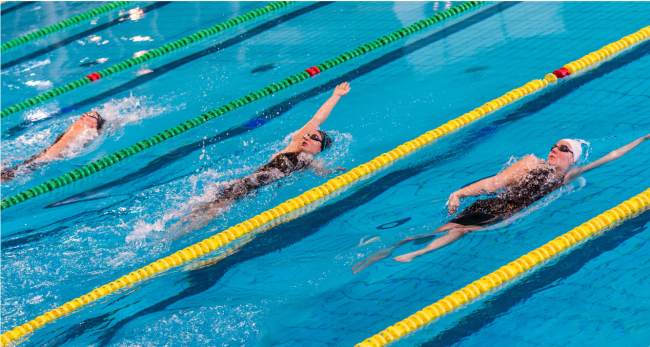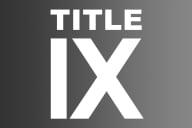You have /5 articles left.
Sign up for a free account or log in.
In the aftermath of the Supreme Court’s decision overturning affirmative action, editorial boards, policy makers and pundits have presented their own ideas on how to preserve college student diversity. Abolish early decision. End the advantages for the kin of big donors. Further de-emphasize standardized tests. Within days of the ruling, a civil rights organization sued Harvard to force it to stop favoring the children of alumni.
But almost completely absent from the discussion is the most significant beneficiary of preferential college admissions: recruited athletes. The advantages are irrefutable: data presented in the Students for Fair Admissions case show that athlete admissions advantages dwarf those offered to legacies and traditionally underrepresented groups. According to a recent study in the Journal of Labor Economics, the admission rate for recruited Harvard athletes is more than twice the rate for legacies. In addition, reinforcing research from the early 2000s, Harvard’s recruited athletes have lower academic credentials than nonathlete admits.
Racially, 69 percent of Harvard’s admitted recruited athletes are white, the same or similar as for legacies and some other privileged groups. Among nonprivileged admits, only 36 percent are white. Athletes typically comprise about 10 percent of an incoming Harvard cohort.
Why tiptoe around the admissions advantages awarded to athletic recruits? Squeamishness on the subject reflects a deep cultural misunderstanding of sports’ contributions to upward social mobility. Many Americans believe that collegiate sports provide avenues for low-income minority students to attain college degrees and improve their quality of life. Some do. But even at elite colleges beyond Harvard, athletes are disproportionately white, suburban and wealthy.
This racial, geographic and socioeconomic bias feeds off the expensive and largely suburban pay-to-play pipelines dominating youth sports. College athlete recruitment at all levels now takes place almost exclusively through these channels. Children lacking resources (or accessibility) to enter or remain in the pipelines are invisible to college recruiters and are denied the astounding admissions advantages offered to recruited athletes.
By elevating athletic skill above other valuable traits, colleges also have corrupted youth sports and turned childhood play into one more scramble for advantage. The chance of preferred admission to elite colleges has driven many kids to specialize in one sport at an early age, contributing to a surge in devastating physical injuries and emotional despair. University leaders can pretend that their practices exist in a vacuum outside ordinary life, but the special benefits they bestow on recruited athletes have helped turn youth sports into a $19.2 billion industry that caters to those with resources and snubs those without. In the U.S., people of color are overrepresented among those without.
There is no convincing reason why admissions advantages should be skewed toward athletes rather than artists, musicians or thespians—to say nothing of otherwise qualified applicants who lack the family resources to burnish their extracurricular résumés. And contrary to popular lore, varsity sports on the whole do not provide a mechanism for community cohesion or school spirit; students are not lining up three deep to watch squash or fencing matches. Playing sports might be valuable for the athletes, but their value may not extend much beyond the participants.
Colleges of all sizes, especially those we classify as elite, can stop proactively recruiting and offering admissions advantages to potential athletes that are unavailable to ordinary applicants. By doing so, they would move beyond paying lip service to diversifying their student populations. They also would shut down the pipelines that spoil kids’ sports. As important, they would reduce the creeping influence of athletics in colleges and reinforce the primacy of academics in higher education.
We suggest that this movement begin with the New England Small College Athletic Conference (NESCAC), home to 11 small, academically elite liberal arts colleges in the Northeast, including Amherst and Williams Colleges. These colleges offer no official athletic scholarships, are fiscally healthy and enjoy an abundance of applicants; their median acceptance rate is 16 percent. Excluding Tufts University (an outlier in the conference by virtue of its larger size), about 30 percent of students at NESCAC member colleges are varsity athletes, many of whom are offered admissions advantages similar to those at Harvard. These self-described “little Ivies” could provide a test case for other colleges that might quietly acknowledge that the college sport industrial complex reinforces rather than challenges certain social injustices.
If the entire NESCAC conference took part, no individual college’s sports program would suffer a real or perceived competitive disadvantage. Returning to tryouts would actually reinforce the conference’s core values, which emphasize academics above all and celebrate representation for the whole student body. Building teams from the existing population on campus, rather than handpicking them in advance, would be fairer and more inclusive.
The special admissions perks for athletes disproportionately favor richer families, corrupt the sports themselves and warp the educational function of colleges and universities. Even more than legacy perks, they are affirmative action for the already advantaged, a slight on nonathletes and a practice embraced by most universities despite mission statements awash with declarations on diversity, equity and inclusion. Data released in the Harvard case unequivocally show the size and scope of the unjustified favoritism extended to recruited athletes. Perhaps nonathletes will be the next group to sue elite colleges for discrimination. They may have the strongest case yet.








